Agriculture & Environment
Journalists Urged to Double Efforts on Environment Conservation Reporting
Published
5 years agoon
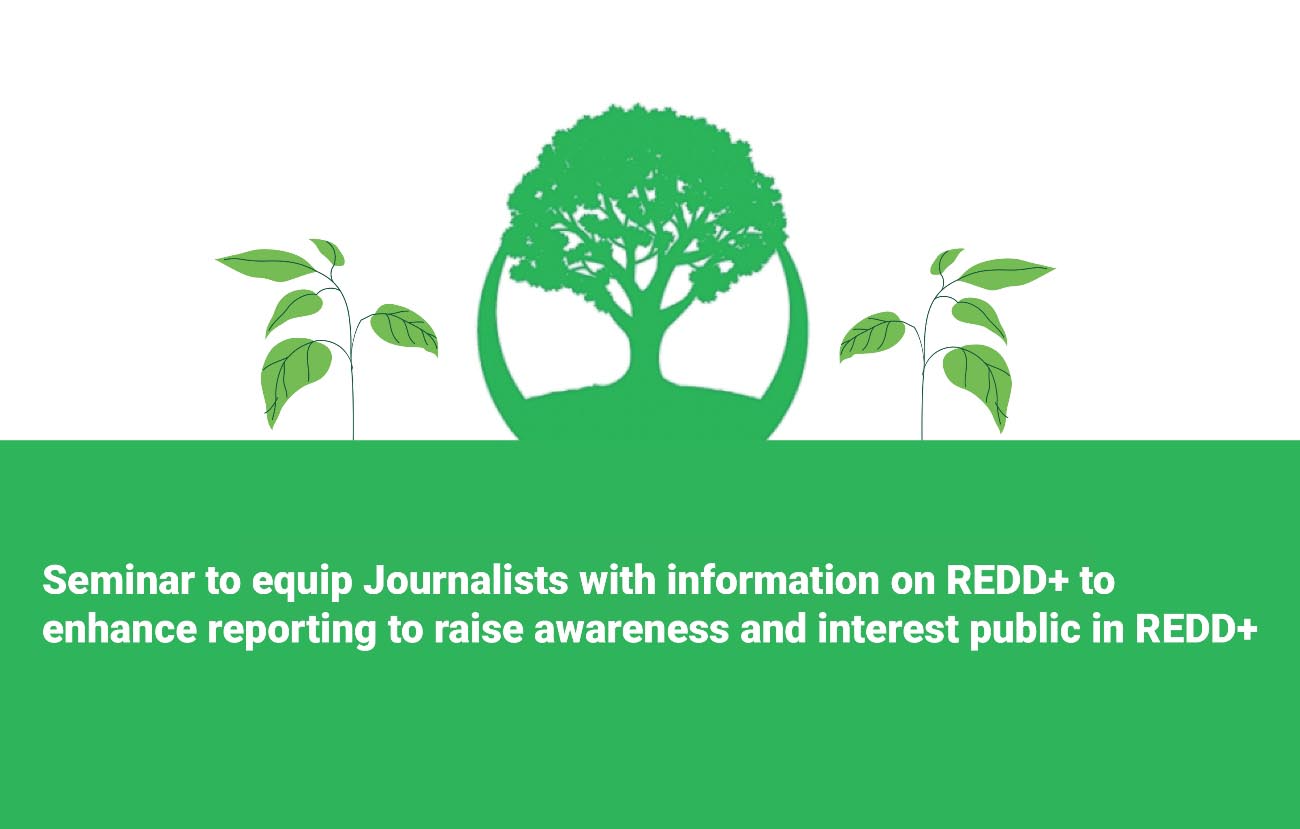
Environment conservationists have appealed to journalists to enhance their efforts on public awareness and policy action for forest conservation when executing their reporting duties. This was during a virtual media engagement organized by the REDD+ East Africa (REDD-EA), on 13th October 2020, to provide updates on Building capacity for REDD+ in East Africa for improved ecosystem health and for sustainable livelihoods in Eastern Africa.
The meeting convened over 20 journalists, communication specialists, representatives from Ministry of Water and Environment (MWE) and experts in environment conservation from REDD-EA at Makerere University.
REDD+ stands for; Reducing Emissions from Deforestation and Forest Degradation plus Conservation of Carbon Stocks, Sustainable Management of Forests, and Enhancement of carbon stocks. It is a multilateral policy aimed at conserving forests for the mitigation of climate change.
According to the Principal Investigatorof REDD-EA project in Uganda, Prof. John Tabuti, REDD+ intends to control emission and increase the capture of carbon by forests. Its two (2) co-benefits are to conserve biodiversity and to enhance human wellbeing.
“REDD+ is a form of Payment for Ecosystem Services that was agreed to globally in 2007. It is an incentive-based mechanism whereby countries and communities participating in REDD+ receive payments for conserving forests and achievements are reported in terms of avoided carbon emissions or sequestered carbon,” he said.
REDD+ has five objectives namely,
- Reducing emissions from deforestation;
- Reducing emissions from forest degradation;
- Conservation of forest carbon stocks;
- Sustainable management of forests;
- Enhancement of forest carbon stocks
Speaking at the meeting, Prof. Tabuti acknowledged the significant contribution from the media when it comes to environment conservation. He however, noted the need for journalists to strengthen their reporting mechanisms on raising awareness and influencing policy for action on forest conservation in Uganda.
Prof. Tabuti said that the rate at which deforestation is occurring in Uganda calls for immediate intervention. To him, despite Government efforts to protect and conserve the natural forests, the country still experiences forest degradation.
Dr. Vincent Muwanika, a scientist on the REDD-EA project, called for a working mutual relationship between the media and environment experts to disseminate information among communities on environment conservation and the importance of protecting and conserving natural forests. “As specialists, we have more than enough data but when it comes to information dissemination, we need the media on board, because they have the language that appeals to the wider public. They have the writing, communication and reporting skills with unique traits that can take us far when it comes to informing the public, and influencing policy actions.”
The Moderator of the REDD-Media training, Ms. Ritah Namisango who is also the Principal Public Relations Officer at Makerere University emphasized the need for researchers and scientists to simplify the technical jargon/terminologies when speaking to journalists and the general public. “It is important to communicate your research using simple and clear messages. Maintain the facts and research findings, but communicate in a language that is understood by journalists and the local people. It is also time to consider the usage of audio-visual content and short videos to disseminate your research,” she said.
During the interactive training, the journalists urged the REDD-EA team and other projects at Makerere University to always engage with the media early enough and ensure that the media is on board from the inception, designing and implementation. Media engagement when designing communication strategies would enable the journalists and researchers/scientists to improve the effectiveness of communication.
The journalists and Communication specialists’ understanding of REDD+ was further enriched by Mr. Xavier Mugumya’s presentation titled: “How does Uganda benefit from the REDD+ policy?”
The Assistant Commissioner for Forestry/REDD+ National Focal Point, Ministry of Water and Environment, Mrs. Margaret Mwebesa, pointed out that the Government is working hard to slow and reverse the declining forest covers especially on private land. In a presentation on Uganda REDD+ Readiness Process, Achievements and Developments, Mrs. Mwebesa said that in 1990, 70% of Uganda’s natural forest cover was constituted by forests on private land and by 2017 this had reduced to only 38% due to deforestation and forest degradation.
She recognized the tremendous role played by the Government of Uganda to develop and enforce policies that are geared towards conserving Uganda’s forests and other natural resources.
According to Mrs. Mwebesa, Uganda launched a National REDD+ Strategy during United Nations Framework Convention on Climate Change (UNFCCC), 23rd Conference of Parties (COP 23) on 16th November, 2017 in Bonn, Germany and nationally in March 2019. The strategy is grounded in the Climate Change Policy (April 2015), National Forest Policy (2001) and National Forest and Tree Planting Act (2003), National Development Plan II and Uganda’s 2040 Vision.
In addition to promoting Public-Private-Partnerships, particularly those that depend on commodity value chains, Government has also initiated a mechanism through which REDD+ strategies will be integrated into the various sectors of development.
“Government included the National REDD+ Strategy implementation among the key priority areas for Public financing with effect from FY 2019/20. We are now lobbying sectors such as Agriculture, wildlife/tourism, energy, infrastructure, local governments, water and lands to incorporate the REDD+ strategies into their planning and budgeting frameworks,” she remarked.
Shading the journalist perspective on forest degradation and deforestation in respect to the role of media; Mr. Gerald Tenywa an environment journalist from New Vision noted that media in Uganda has played a critical role in setting the public agenda. We have uncuffed and followed up issues on sold and encroached upon natural resources,” he said.
Mr. Tenywa noted that media has for long played the education role, when it comes to environment degradation and conservation by training and informing the public about the importance of protecting and conserving natural resources.
“We have fostered the entertainment role by designing edutainment channels that convey the message in a manner that attracts people’s attention. Journalists have always deployed the watchdog/investigative tactics when carrying out their duties in respect to environment conservation. On many occasions we have dug deep into the details and followed up cases related to forest and swamp reclamation in Uganda,” he said.
Reiterating the critical role of media in environment conservation Mr. Noah Omuya, said that journalists have faced it rough while executing their duties. Among the challenges he noted included; the perception of media towards environment stories, cost implication when covering the environment related issues, Lack of journalist capacity to tell an environment story, and complicated language that is used by the environment conservation specialists.
In her presentation, Ms. Kellen Aganyira explained that social and environmental safeguards (SES) are a mandatory requirement for REDD+. In particular, full and effective participation of forest dependent communities is a critical safeguard that creates opportunities and reduces risks of REDD+. Accordingly, she conducted research to determine factors that influence local peoples’ participation in SES projects in Uganda. She found out that the youth are less likely to participate in SES projects implemented on private land. This finding is critical for Uganda, where 78% of its population is below 35 years. Hence the need to plan REDD+ incentive packages that are attractive to this age group.
The REDD+ EA team at Makerere University consists of the following members: Prof. John Tabuti, Dr. Vincent Muwanika, Dr. Dorothy Nampazira and Dr. Josephine Esaete.
Please see Downloads for the detailed presentations.
Article by: Proscovia Nabatte
Edited by: Ritah Namisango
You may like
-


Makerere University and Partners Celebrate INSSPIRE Project Achievements in Evidence-Based Higher Education on Food Systems and Climate Action
-
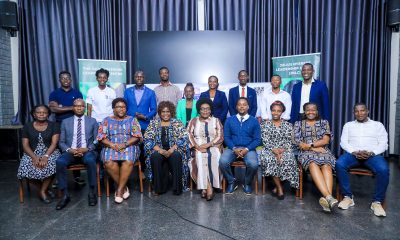

JNLC and UNDP Host Two-Day Community Innovation Showcase Featuring Impactful Alumni Projects
-


JASH2025 wraps with the 23rd Matthew Lukwiya Memorial Lecture and Kampala Declaration Statement
-
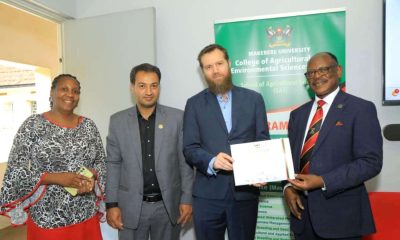

Vice Chancellor Closes International Conference on Food Systems Transformation for Climate Action
-
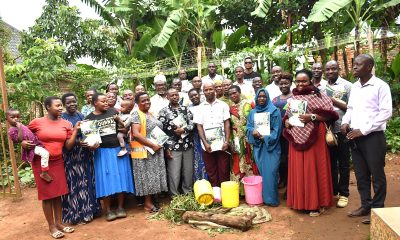

RUFS Project Team Trains Smallholder Farmers in Mbale City in Smart Agronomic Practices
-


Prof. Sarah Ssali commends Makerere University’s longstanding relationship with the Mastercard Foundation
Agriculture & Environment
How transformative education is shaping Africa’s next generation of innovators
Published
2 weeks agoon
December 2, 2025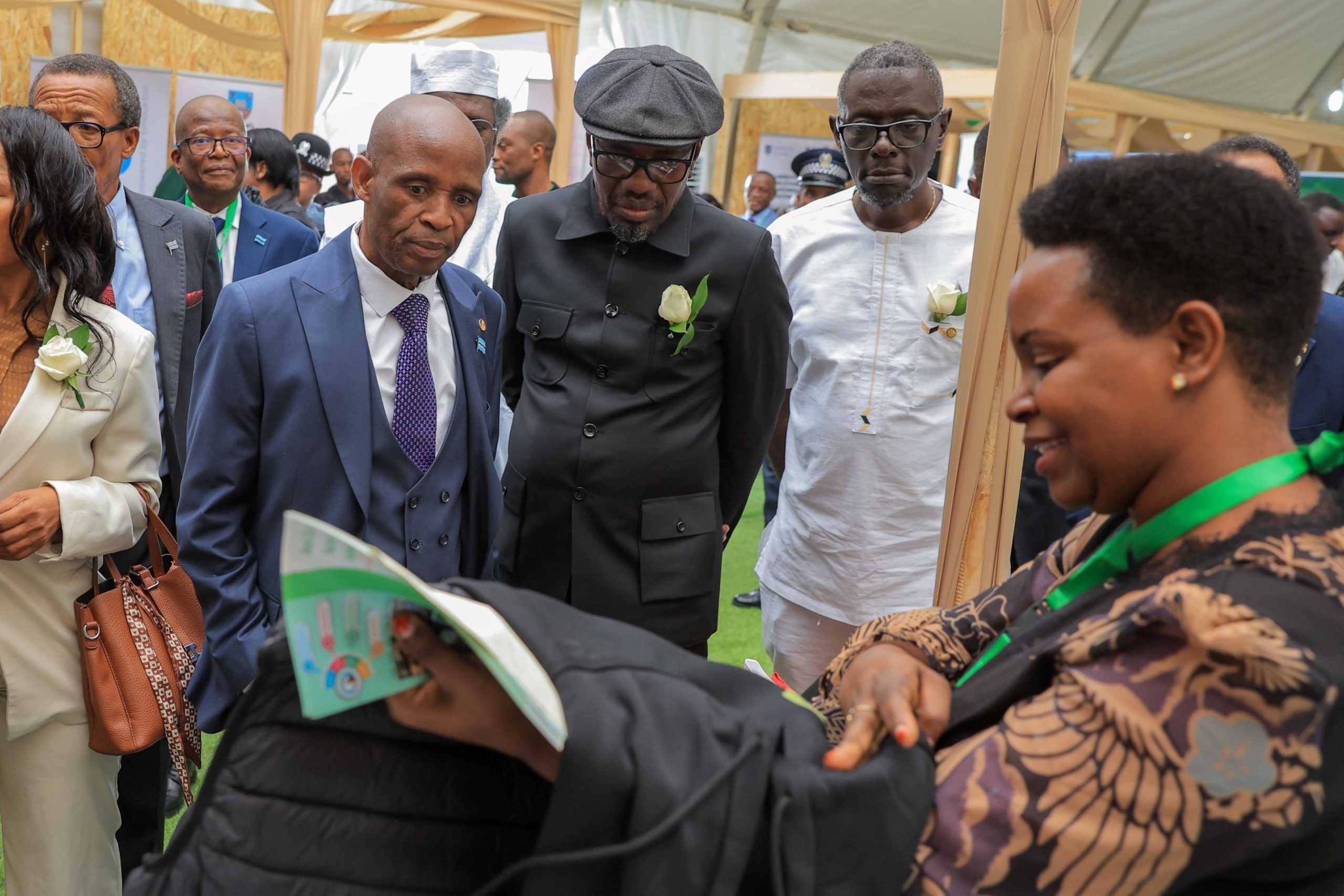
The African Union’s Agenda 2063 articulates a clear continental ambition; to unlock Africa’s potential to feed itself and to harness the transformative power of its greatest asset, its people. While natural resources remain abundant and diverse, Africa’s long-term prosperity hinges on the strategic cultivation of human capital through robust, forward-looking education systems.
Like many governments across the continent, the Government of Botswana, the host of the Regional Universities Forum for Capacity Building in Agriculture (RUFORUM)’s 21st Annual General Meeting (AGM), aligns closely with the Sustainable Development Goals of zero hunger and no poverty. It also upholds the collective aspirations of African Heads of State and Government expressed in the Kampala Declaration under the Comprehensive African Agricultural Development Programme (CAADP).
Against this backdrop, the pre-AGM session on transformative education and ecosystem engagement convened hundreds of scholars, policymakers, and thought leaders from Africa and beyond. The discussions underscored a shared urgency that strategic collaboration must move from concept to action if the continent is to confront its pressing challenges of food insecurity, public health vulnerabilities, conflict and displacement, youth unemployment, and the persistent pressures of migration. The message was clear; Africa’s transformation requires not isolated interventions, but integrated, interdisciplinary solutions.
In fulfilling the CAADP agenda, universities stand at the forefront. They must leverage every available opportunity to generate workable, evidence-based solutions through science, technology, and innovation. However, they cannot act alone. National Agricultural Research Systems, the private sector, civil society, and development partners must each play an indispensable role in strengthening Africa’s education and agricultural systems. Together, these institutions form the ecosystem that will determine whether Africa can translate its ambitions into tangible progress.
The Youth Dividend
Since its establishment at Makerere University in Uganda in 2004, RUFORUM has supported the training of more than 3000 students across the continent at PhD, Masters, undergraduate and Technical and Vocational Education and Training (TVET) level. These scholars, drawn from diverse African countries and hosted in universities across the region, represent a deliberate investment in building Africa’s scientific capacity and advancing pan-African collaboration. Notably, 98% of RUFORUM-supported graduates continue to work within their home countries or regions, reinforcing national and regional development efforts.
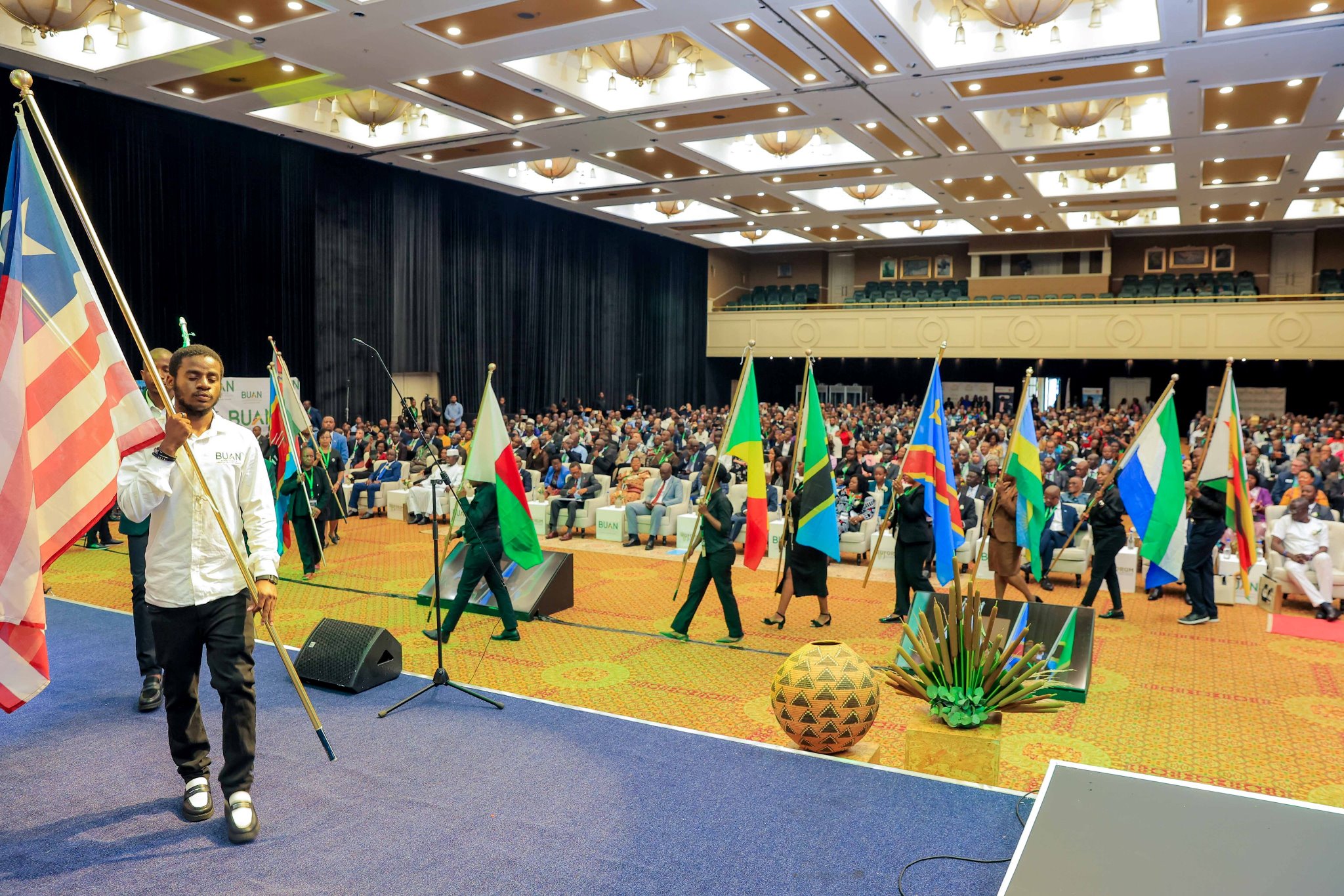
A key contributor to this impact is the Mastercard Foundation supported initiative, Transforming African Agricultural Universities to Meaningfully Contribute to Africa’s Growth and Development (TAGDev2.0). This programme strengthens universities, Technical, and Vocational Education and Training (TVET) institutions to drive inclusive, equitable, and climate-resilient transformation of agriculture and agri-food systems. Through experiential learning, practical skills development, and youth empowerment, TAGDev enhances the ability of young Africans to engage meaningfully in agriculture as innovators, leaders, and entrepreneurs.
Across both TAGDev 1.0 and 2.0, thousands of young women and men have been equipped to establish profitable enterprises and create employment opportunities within their communities.
This transformative impact was evident during a keynote address by Dr. Yeukai Mlambo from the MasterCard Foundation followed by a panel session where four young entrepreneurs and beneficiaries of RUFORUM MasterCard supported programmes, shared their journeys. Their enterprises span a wide spectrum. From improving and multiplying high-quality potato seed in Nakuru Kenya by Winnie Wambugu, to equipping differently abled persons (PWDs) with agronomy and entrepreneurship skills in Uganda by Zena Saliru, to skilling refugees in the west Nile region of Uganda by Gordon Victor Akejo to supporting out-of-school youth to become self-reliant by Kato Omia. These stories illustrate not only the ingenuity of Africa’s youth but also the importance of sustained investment in higher education and innovation ecosystems. They embody the youth dividend that Africa stands to gain if it continues to nurture the potential of its young people.
A moment Africa cannot afford to miss
As the conversations by the young entrepreneurs have made clear, Africa stands at a pivotal moment. The continent’s aspirations captured in Agenda 2063, the SDGs, and the CAADP commitments cannot be realised through intention alone. They demand systems that elevate human capital, institutions that collaborate rather than compete, and education models that prepare young people not merely to seek opportunity but to create it.
The stories shared by emerging entrepreneurs and young scientists are more than inspiring anecdotes; they are proof points. They show that when universities are empowered, when partnerships are genuine, and when young people are trusted with the tools and mentorship they need, transformation is already underway.
The scale of Africa’s challenges requires an equal scale in commitment by Governments, universities, research organisations, the private sector, and development partners who must deepen investments in higher education, innovation ecosystems, and youth-focused initiatives. Failure to do so risks squandering one of the continent’s most powerful assets, its demographic dividend.
Africa must therefore double down on transformative education and ecosystem-led collaboration. The momentum witnessed in Botswana should not end with the AGM. It should mark the beginning of renewed resolve to equip Africa’s young people with the skills, networks, and support they need to lead the continent’s next chapter.
The future is already taking shape in laboratories, fields, innovation hubs, and classrooms across the continent. It is time to scale what works and ensure that Africa’s brightest minds are empowered to build the strong and prosperous nations they envision. Collectively, we shall all achieve the Africa that we want.
Agriculture & Environment
Strengthening Capacity and Shaping Policy: Makerere University Reviews Progress of MERIT and Environmental Risk Research Programs
Published
4 weeks agoon
November 18, 2025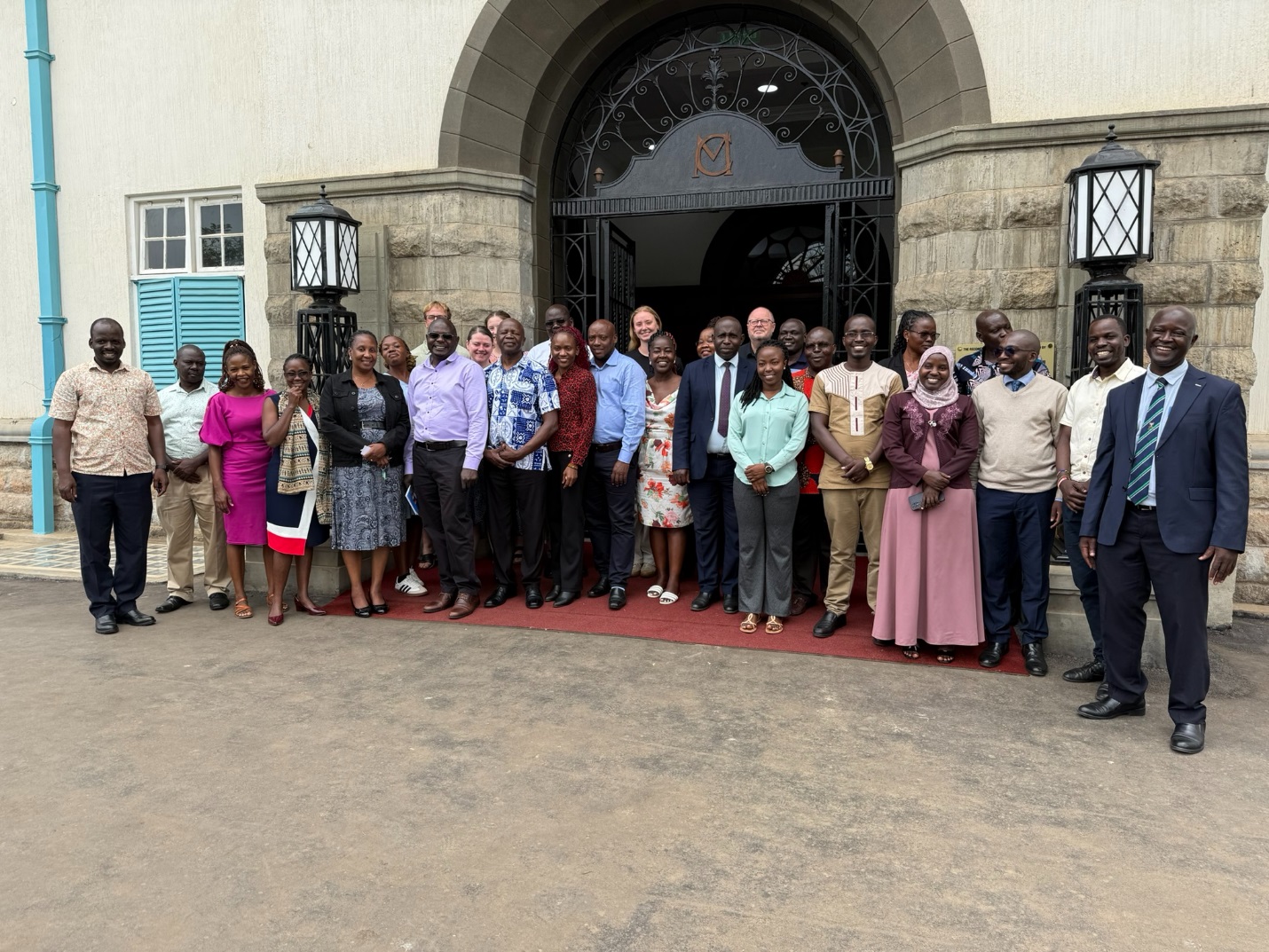
Makerere University, this week, through the College of Agricultural and Environmental Sciences (CAES), hosted a comprehensive impact review of the Environmental Risk Management Under Increasing extremes and Uncertainty (MERIT) Project, bringing together faculty, researchers, students, and partners from Ugandan and Norwegian institutions. The discussions highlighted the transformational impact of collaborative research, student engagement, and capacity development in shaping policy, strengthening community resilience, and advancing Makerere’s contribution to national development.
A Cross-Continental Partnership Driving Change
The MERIT Project, focusing on Environmental Risk Management and the Increasing Extremes and Uncertainty, is a five-university collaboration funded by the Norwegian Agency for Development Cooperation (NORAD) under the Norwegian Programme for Capacity Development in Higher Education and Research for Development (NORHED) programme. The project, which runs from 2021 to 2026 (with a one-year extension due to COVID-related delays), seeks to enhance mutual collaboration between universities in Sub-Saharan Africa and Norway. The project grant is worth 20 million Norwegian kroner and is being implemented across four Universities, namely, Makerere University, Uganda Martyrs University, University of Dar es Salaam, and Haramaya University in Ethiopia, with a strong involvement of the Norwegian University of Science and Technology (NTNU) and the Western University of Science and Technology.
Its core components include:
- Curriculum review and development
- Staff and student training (Master’s and PhDs)
- Joint research and publications
- Community-based environmental risk interventions
- Student and staff exchange programs
- SDG integration and gender mainstreaming
So far, 20 staff and 15 mainstream students have benefited from and participated in the project initiatives, with 13 Master’s and 2 PhD candidates progressing through specialised training in environmental risk management, geohazards, and disaster risk studies.
Student Research Driving Evidence-Informed Policy and Practice
The MERIT and NORHED-supported projects have empowered graduate students and early-career researchers at Makerere University to undertake cutting-edge research that directly informs Uganda’s environmental risk management agenda. Although the full findings are yet to be published, the projects have catalyzed important scientific inquiry in several key areas.
Some of the students are currently working on:
- Improving environmental data and modelling to strengthen flood forecasting, hydrological planning, and climate-related risk assessment in high-risk regions.
- Assessing disaster risk reduction practices at the local government level and examining how global frameworks such as the Sendai Framework and the SDGs are being implemented on the ground.
- Exploring nature-based solutions, including sustainable approaches to land restoration, riverbank stabilization, and ecosystem protection.
- Studying climate impacts on agriculture and food systems, with a focus on supporting vulnerable households and smallholder production.
- Mapping urban ecological systems, including forest patches and carbon stocks, to guide sustainable urban planning.
- Documenting community-led adaptation strategies and traditional ecological knowledge to strengthen locally grounded resilience approaches.
- Evaluating the role of non-state actors, such as NGOs and community groups, in environmental risk reduction and recovery efforts.
Together, these research efforts are generating practical insights that can shape policy development, inform district and national planning, and strengthen community resilience. The projects are also building a new cohort of scientists equipped with the skills to bridge academic work with real-world environmental management challenges.
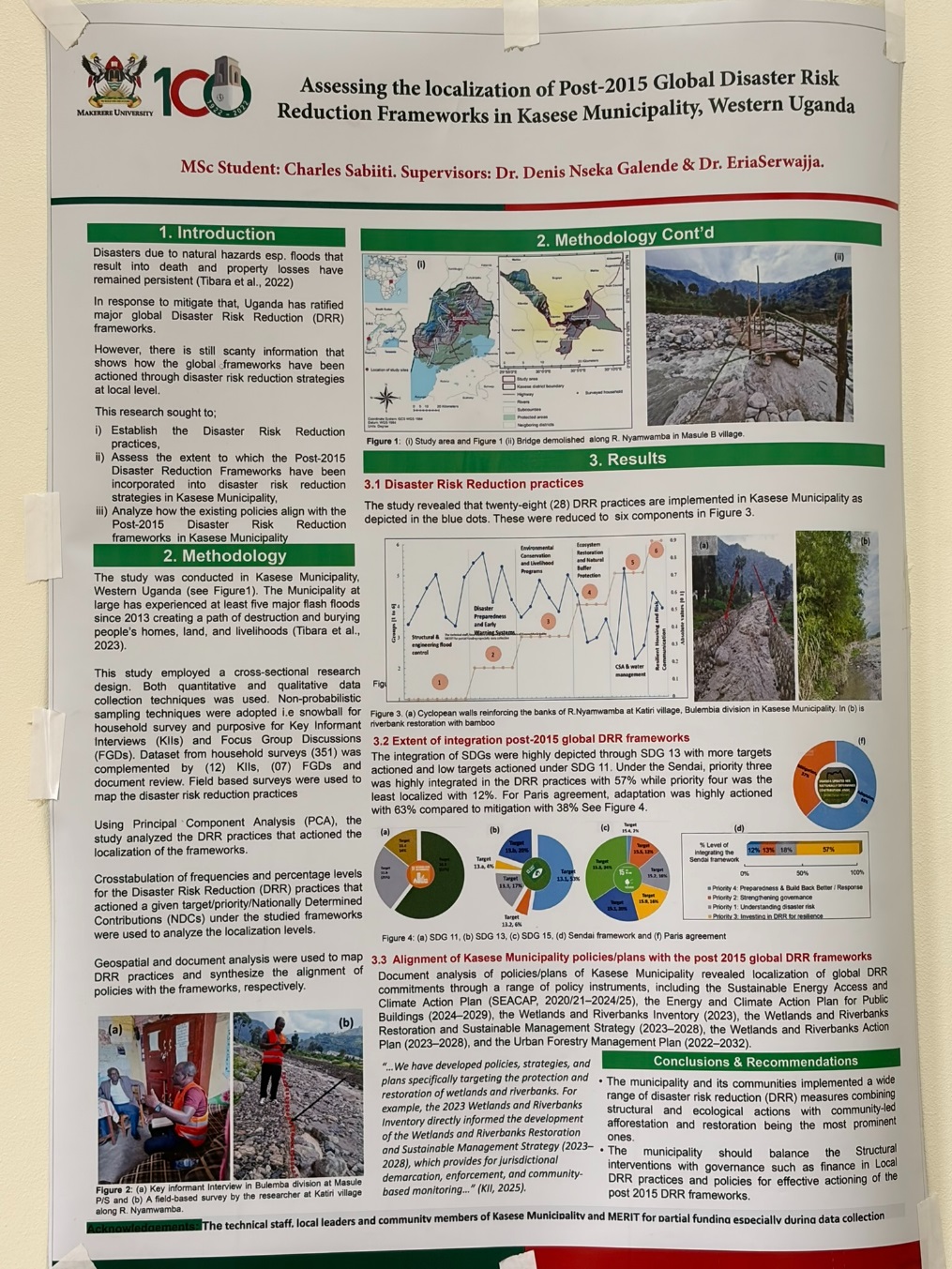
Community Engagement and Local Knowledge at the Centre
The Environmental Risk Management component of the MERIT project has contributed to impactful knowledge and research vital for community interventions in highland and mountainous areas such as Mbale, Bududa, Sironko, and other districts that are prone to environmental risks, like landslides, flooding, and geohazards.
Key community-focused activities highlighted in the meeting included digitizing households in high-risk areas, using remote sensing and GIS to develop contextual warning systems, documenting and integrating traditional ecological knowledge, assessing community resilience and vulnerabilities, and generating data for localized environmental risk planning. Such engagements not only strengthen community preparedness but also provide students with rich field experience and data for their research.
Student Exchanges and a Global Learning Experience
In an Interview, Prof. Harald Aspen,the Head, Department of Geography and Social Anthropology at NTNU, and Dr. Charlotte Nakakaawa Jjunja, the administrative co-ordinator of the project at NTNU, noted that, so far, five students from NTNU are currently undertaking research and internships in Uganda, immersing themselves in local challenges and contributing to joint innovations. Ugandan students have also benefited from exposure to Norway’s systems, creating a two-way flow of knowledge and experience.
They further noted that the exchange program, supported by the CostClim project under the Norpart project, helps students appreciate the complexities of implementing SDGs in diverse contexts, turning theory into practical, actionable insights.
Strengthening Makerere’s Institutional Capacity
Makerere University has benefited significantly from the MERIT collaboration. In his remarks, Prof. Yazhidi Bamutaaze, the Deputy Principal, CAES, noted that the College had acquired a Land Cruiser to support fieldwork, funding for curriculum review and SDG evaluation, support for gender mainstreaming initiatives, research funding for senior academic staff, enhanced visibility through joint publications and innovations, competence development trainings for college staff and students and co-supervision arrangements among others.
Such partnerships reinforce the University’s strategic commitment to cutting-edge research, global collaboration, and community impact.
Sustainability, Student Energy, and the Path Forward
A major segment of the meeting focused on the operationalization of sustainability principles across the University. Dr. Paul Mukwaya, the Head, Department of Geography, Geo-informatics and Climatic Sciences at CAES, emphasized leveraging student enthusiasm, building sustainability clubs, and avoiding passive “mainstreaming” in favour of proactive sustainability actions.
Key recommendations included:
- Training students on how to develop policy briefs
- Ensuring every student project reflects the SDGs
- Creating a central repository or map of all student work
- Strengthening academic supervision to grow student confidence
- Building systems that ensure research outputs influence actual practice
Dr. Mukwaya further highlighted the importance of student self-confidence, continuous reflection, and mentorship in shaping future academic and professional careers through the MERIT project.
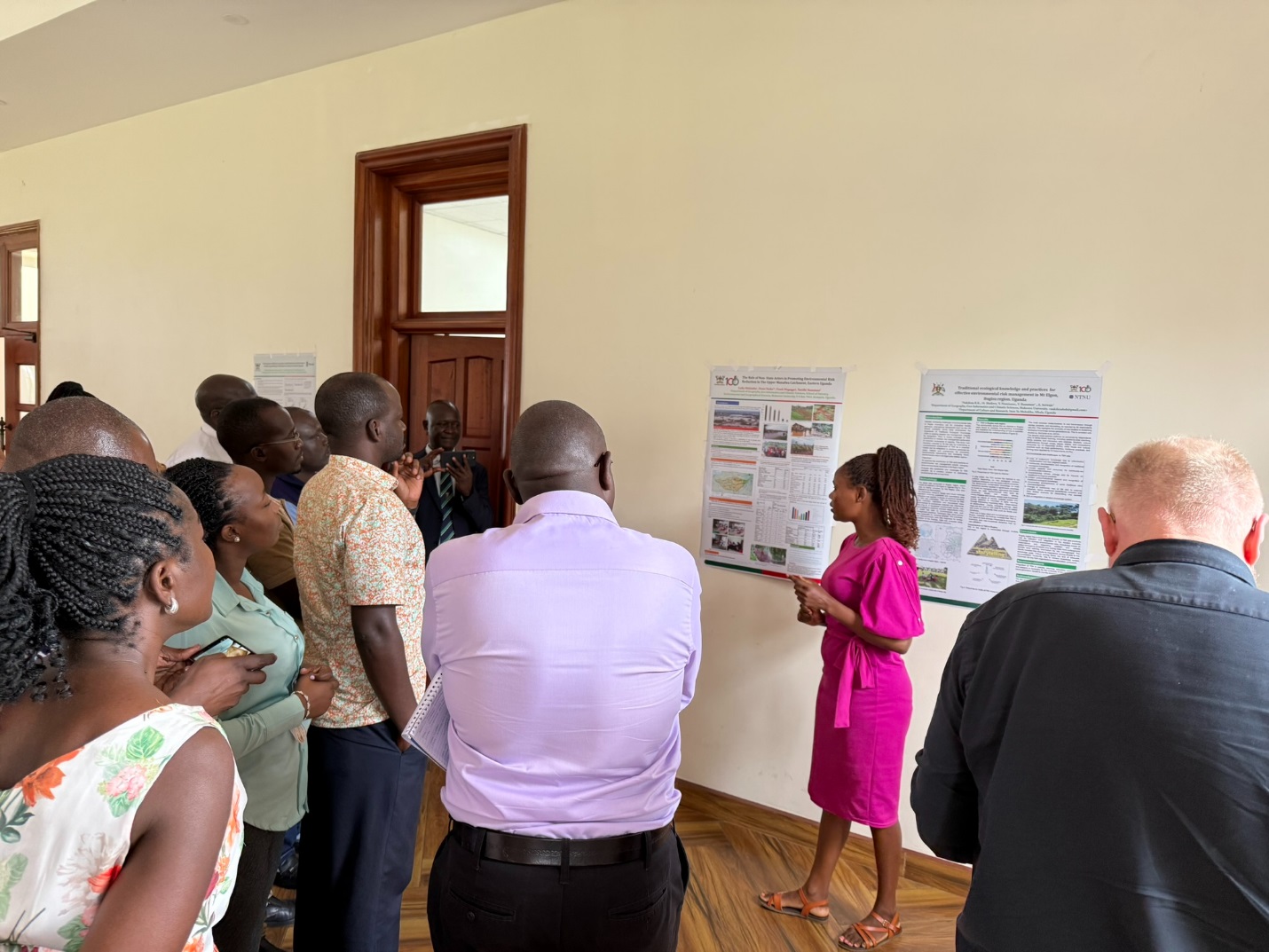
Challenges and Opportunities
While the project has achieved significant milestones, several challenges remain, such as administrative and IT-related delays, balancing donor expectations with academic timelines and bureaucracies, maintaining strong collaborations across multi-university partnerships and ensuring sustainability initiatives are integrated and action-driven
Conclusion: A Growing Ecosystem of Impact
The review meeting affirmed that the MERIT and related research programs are not just academic exercises; they are shaping the future of environmental resilience, policy development, and capacity building in Uganda. The University’s commitment to student growth, collaborative innovation, and evidence-based policy influence underscores the central role Makerere continues to play in national and global development conversations.
As the project enters its final years, the focus now shifts to consolidating gains, scaling successful interventions, and ensuring that the research produced today continues to transform lives tomorrow.
Caroline Kainomugisha is the Communications Officer, Advancement Office, Makerere University.
Agriculture & Environment
SFTNB-MIIC Partnership Nurtures Entrepreneurial Learners & Change Agents
Published
1 month agoon
November 12, 2025By
Eve Nakyanzi
The School of Food Technology, Nutrition and Bio-Engineering (SFTNB), in partnership with the Makerere Innovation and Incubation Center (MIIC), held the third edition of its Entrepreneurship Exhibition on 12th November 2025, bringing together student innovators to showcase a semester’s worth of creativity, research, and product development. The exhibition is a key milestone under the SFTNB Entrepreneurship Program – Cohort 3, a structured model that guides students through the full innovation journey — from idea generation and business training to prototyping, testing, and market access. Supported by MIIC with a UGX 7 million innovation fund, the program has empowered more than 60 students across 15 innovation groups to develop practical, sustainable, and market-ready solutions in food technology, nutrition, and engineering. This year’s exhibition provided a platform for students to present their prototypes, share their business concepts, and engage with university leaders, industry partners, and potential investors, further strengthening Makerere University’s commitment to nurturing a new generation of entrepreneurial change-makers.

The Vice Chancellor Prof. Barnabas Nawangwe commended the School of Food Technology, Nutrition and Bioengineering for nurturing innovations that reflect both creativity and commercial potential. He observed that many of the student products exhibited could be patented, scaled up, and exported, provided their shelf life, packaging, and branding are further improved. Emphasizing that innovation must go beyond classroom projects, Prof. Nawangwe urged students to view their work as viable enterprises capable of transforming communities and creating employment. He also pledged the university’s support in helping innovators register companies and access product certification, even suggesting that Makerere could subsidize related costs. He further called for closer collaboration with economists and marketers to assess product feasibility, adding that the university’s innovation ecosystem should include a dedicated marketing unit. He concluded by reminding students that their ideas hold the power to reshape Uganda’s economy and uplift livelihoods. “Don’t think what you’re doing is small. You’re contributing to transforming a whole society,” he said, adding that “You will not need to go out looking for jobs; you will be creating them.”
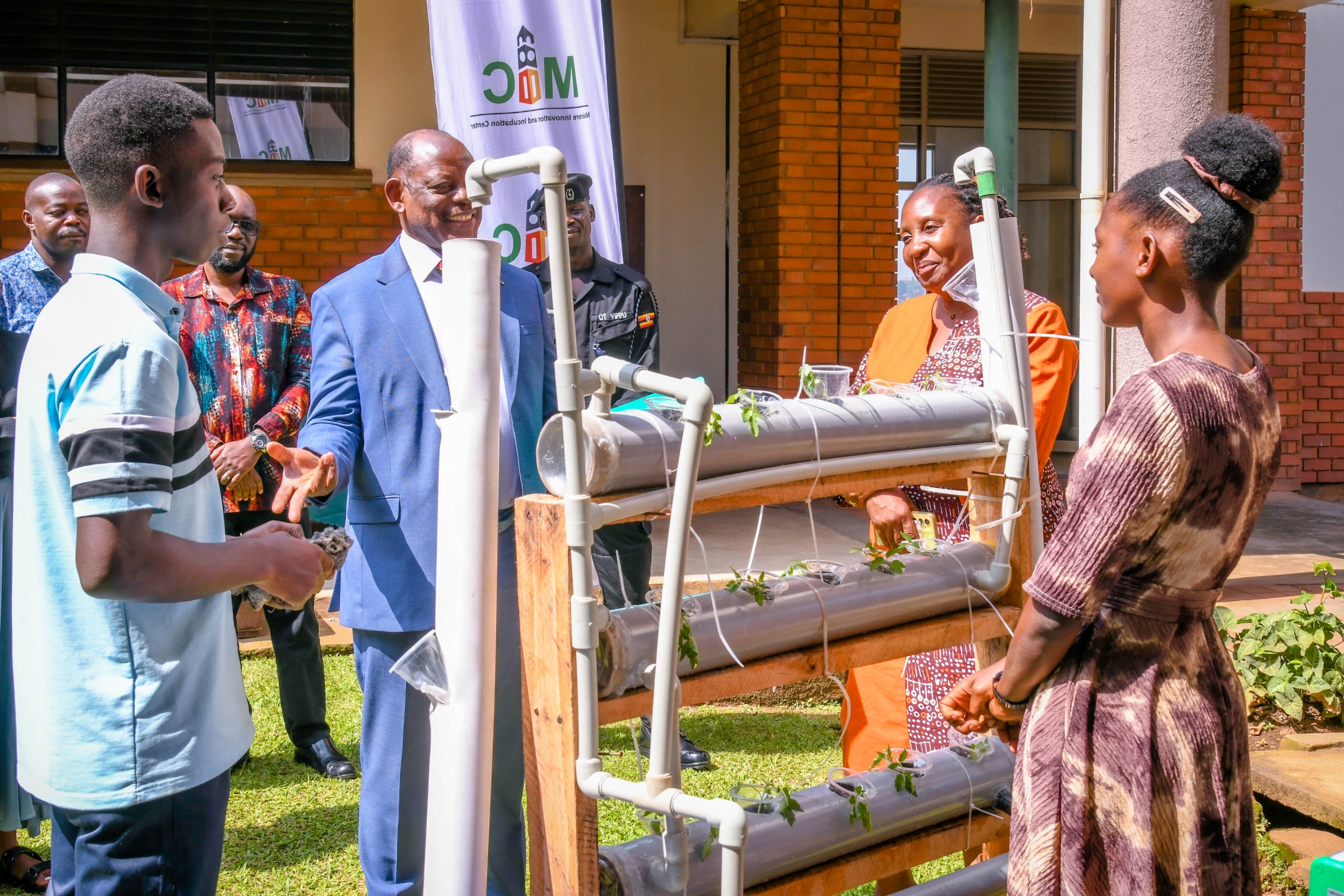
The Dean of the School of Food Technology, Nutrition and Bioengineering, Prof. Julia Kigozi, expressed heartfelt gratitude to the Vice Chancellor and the university management for their continued support toward the school’s initiatives. She noted that the exhibition was a reflection of the hard work and creativity of students who are being equipped not only with technical skills but also with the mindset to innovate and contribute meaningfully to industry. Prof. Kigozi highlighted that the school’s projects have significant potential for commercialization and industry collaboration, made possible through ongoing support and funding. She reaffirmed the school’s commitment to nurturing practical, industry-relevant training that empowers students to apply their knowledge beyond the classroom. “When you see the students out here working hard, they are very encouraged,” she said, adding that “what they are doing demonstrates a lot of potential for products to go out for commercialization and for creating training platforms that can support industry in various ways.”
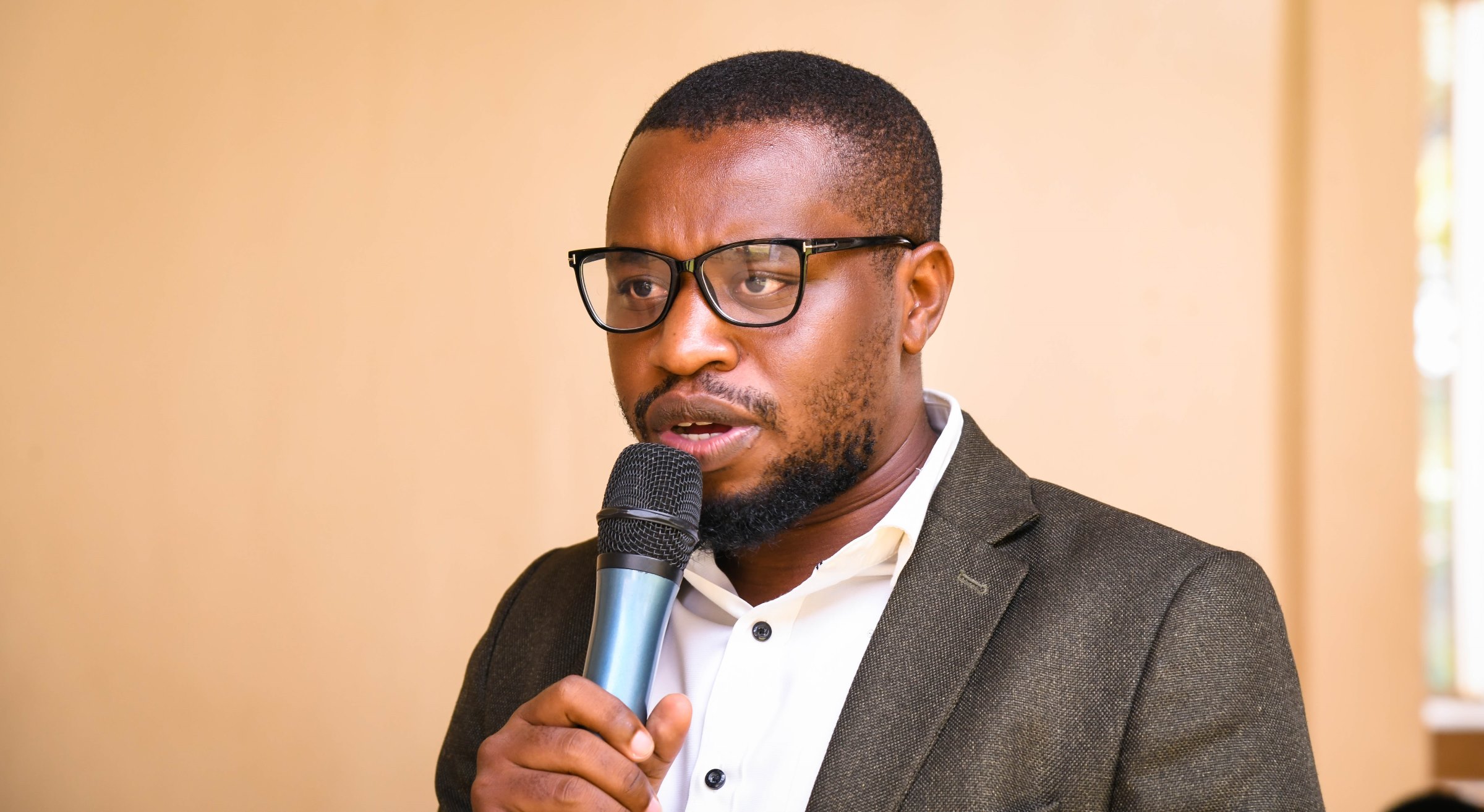
Mr. Gilbert Buregyeya, Programs Lead of the Makerere Innovation and Incubation Centre (MIIC), commended the School of Food Technology, Nutrition and Bioengineering for its commitment to innovation and practical learning. He noted that the partnership between MIIC and the school has been instrumental in redesigning the curriculum to emphasize commercialization and market readiness of student projects. Highlighting ongoing efforts to make the certification process more accessible for young inventors, he revealed discussions with the Uganda National Bureau of Standards (UNBS) aimed at developing flexible, lower-cost certification pathways that allow students to test their products in the market.
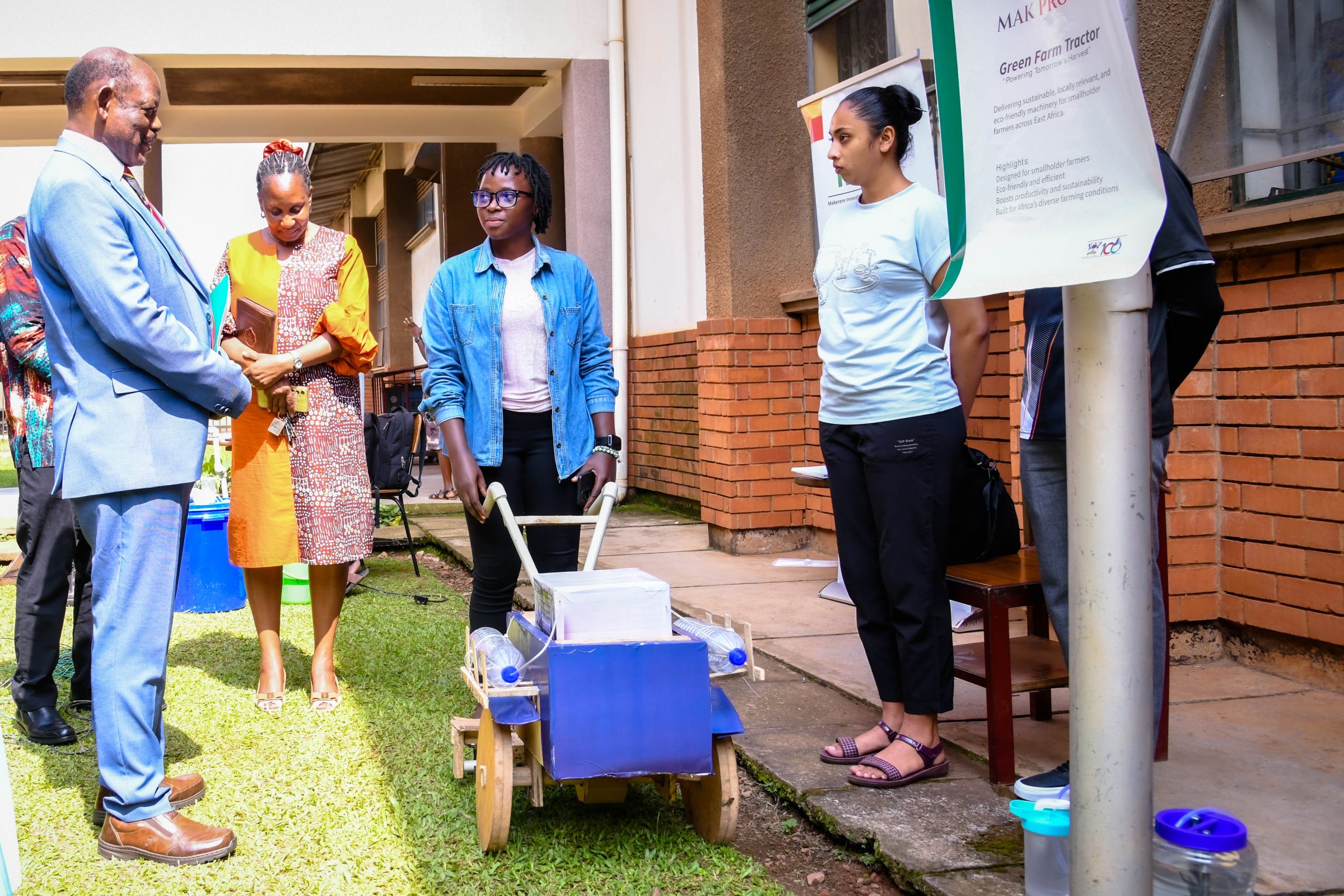
Mr. Buregyeya further emphasized the importance of cross-college collaboration within the university, pointing to successful engagements with other colleges such as COFA and Queensland College. He expressed optimism that Makerere’s innovation ecosystem will soon produce groundbreaking, market-ready products capable of competing globally. “We are happy that the journey is underway this semester,” he said, adding that “our goal is to support young innovators to move from small markets to compete with the bigger ones outside, and to make certification and commercialization more attainable for students.”
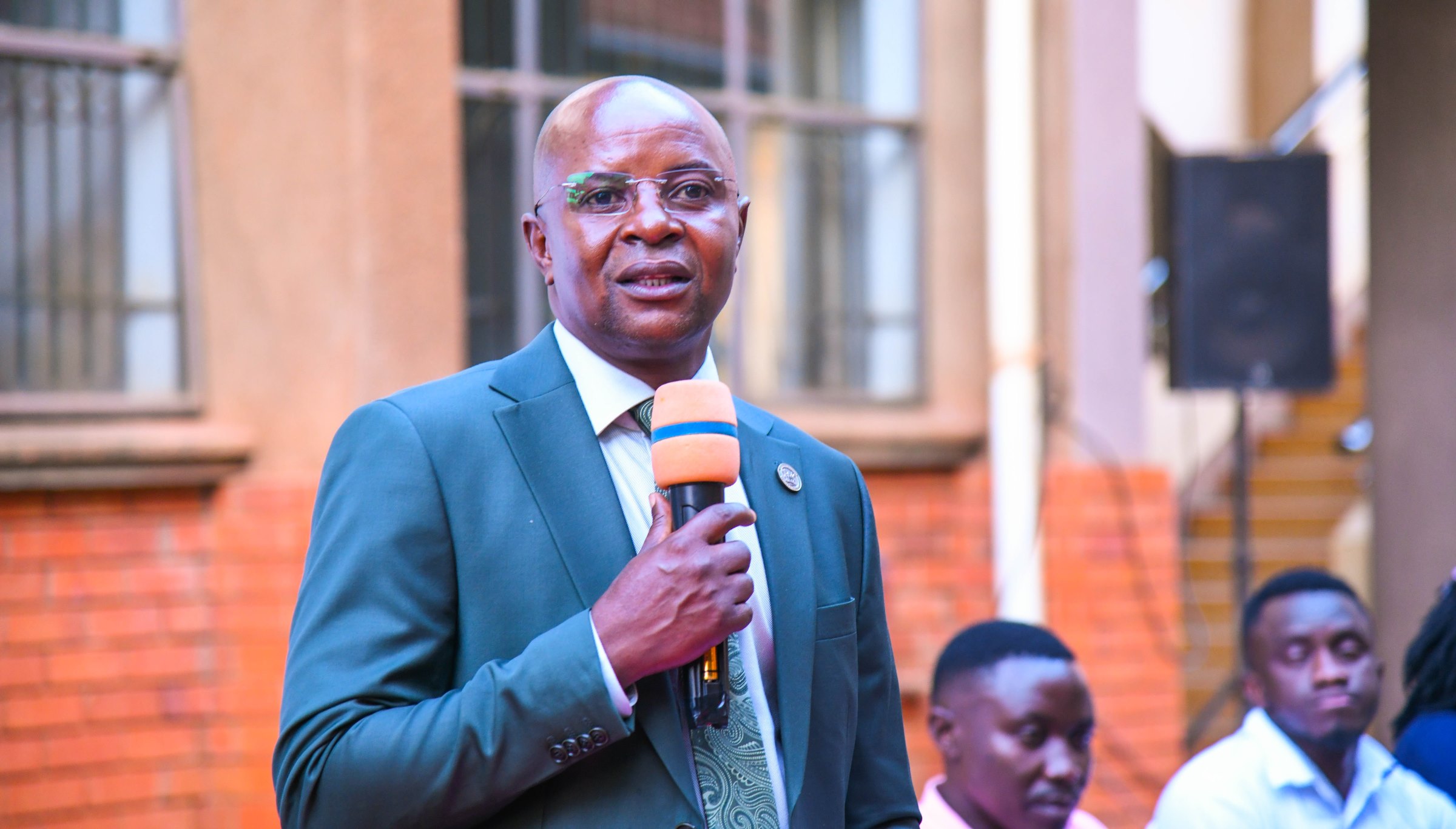
Representing the Deputy Vice Chancellor for Academic Affairs, the Principal of the College of Business and Management Sciences (CoBAMS), Prof. Edward Bbaale commended the School of Food Technology, Nutrition and Bioengineering for integrating innovation and entrepreneurship into academic training. He described the student exhibition as a celebration of “innovation, action, purpose and science that transforms,” noting that such initiatives align with national goals of value addition, sustainability, and community transformation. Prof. Bbaale emphasized that the showcased projects — spanning food, nutrition, and engineering — demonstrate how students are emerging as entrepreneurial learners and change agents addressing real-world challenges.
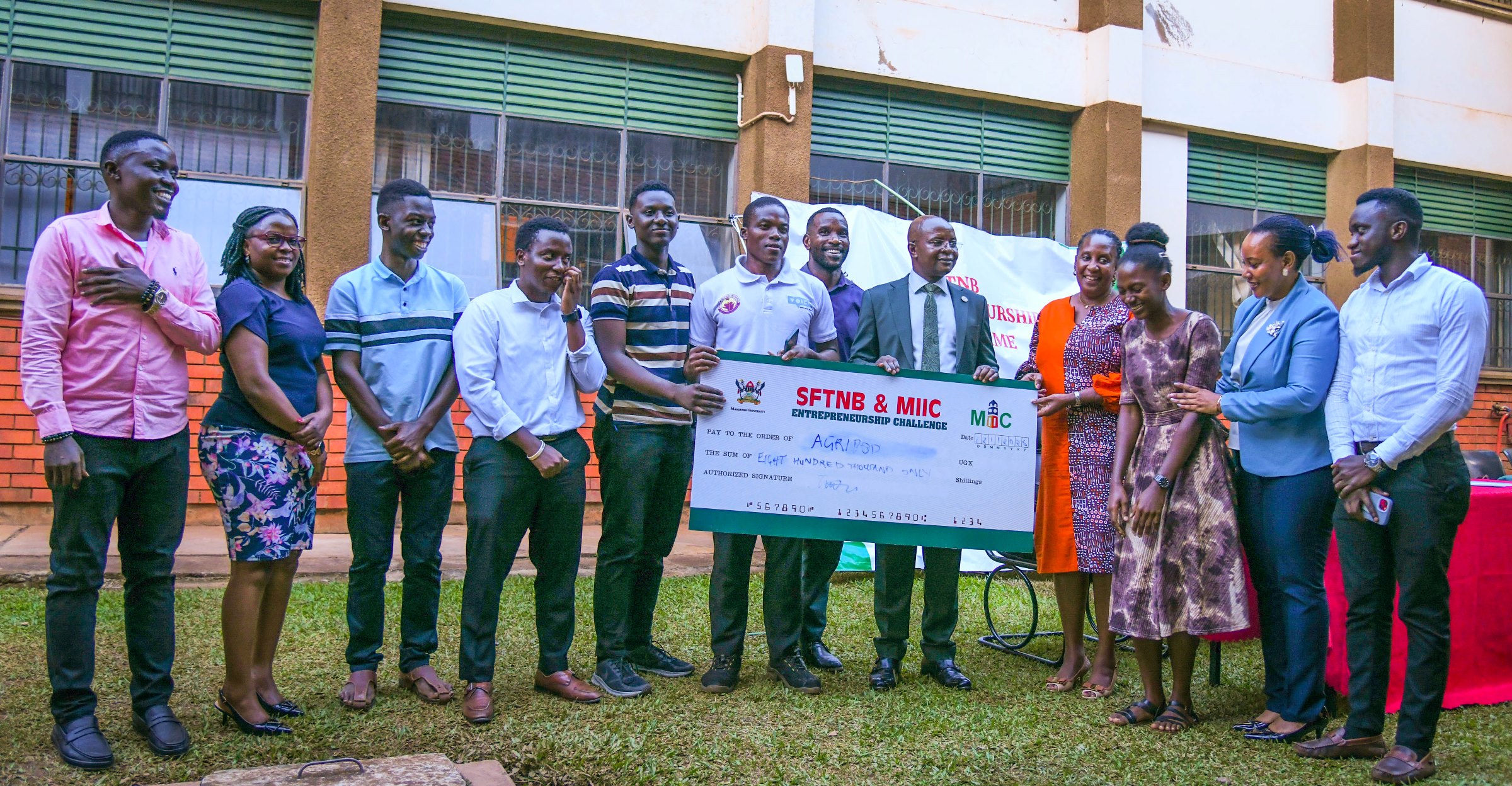
He acknowledged the Makerere Innovation and Incubation Centre (MIIC) for supporting student-led research and urged innovators to remain focused, ethical, and community-oriented in their ventures. Commending the mentors and staff for their guidance, he reaffirmed the university’s commitment to building a research-intensive, innovation-driven ecosystem that supports ideas from concept to commercialization. “Never involve yourself in a business when you are not serving a community problem,” he advised, adding that “you have shown resilience, creativity and passion — proving that innovation knows no bounds. The future belongs to those who are ready to build it.”
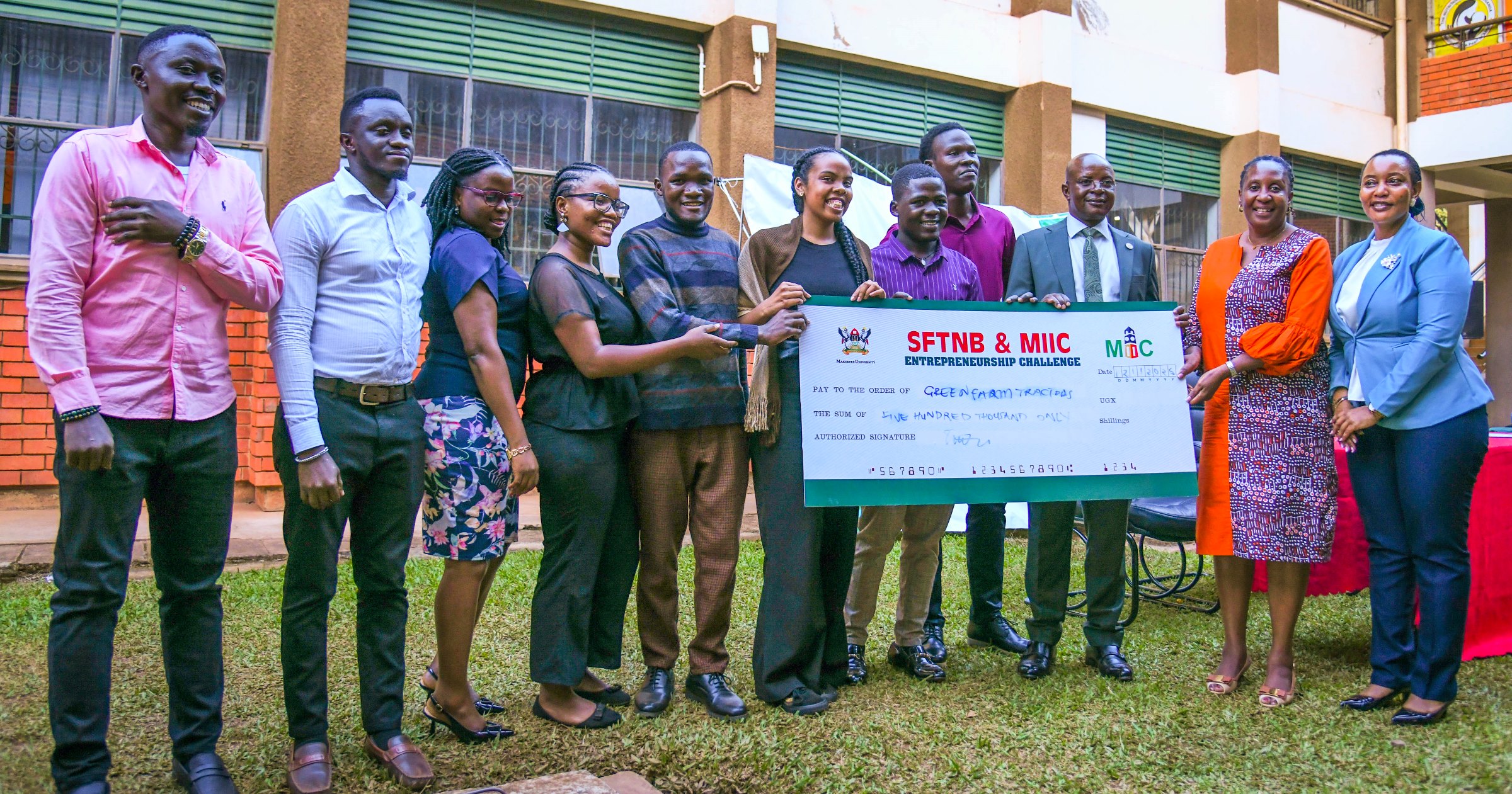
The exhibition concluded with the recognition of the top-performing student innovation groups, celebrating their creativity, technical skill, and market potential. Umoja Lacto Blend emerged as the Second Runner-Up, impressing judges with its unique product concept and strong value-addition focus. The First Runner-Up, Green Farm Tractor, showcased an innovative engineering solution designed to improve agricultural efficiency and accessibility for smallholder farmers. Taking the top spot was Agri Farm, whose outstanding innovation, clear business model, and readiness for market positioned them as the overall winners of the 2025 cohort. Their achievements reflected the high caliber of talent within SFTNB and the transformative potential of student-led entrepreneurship.
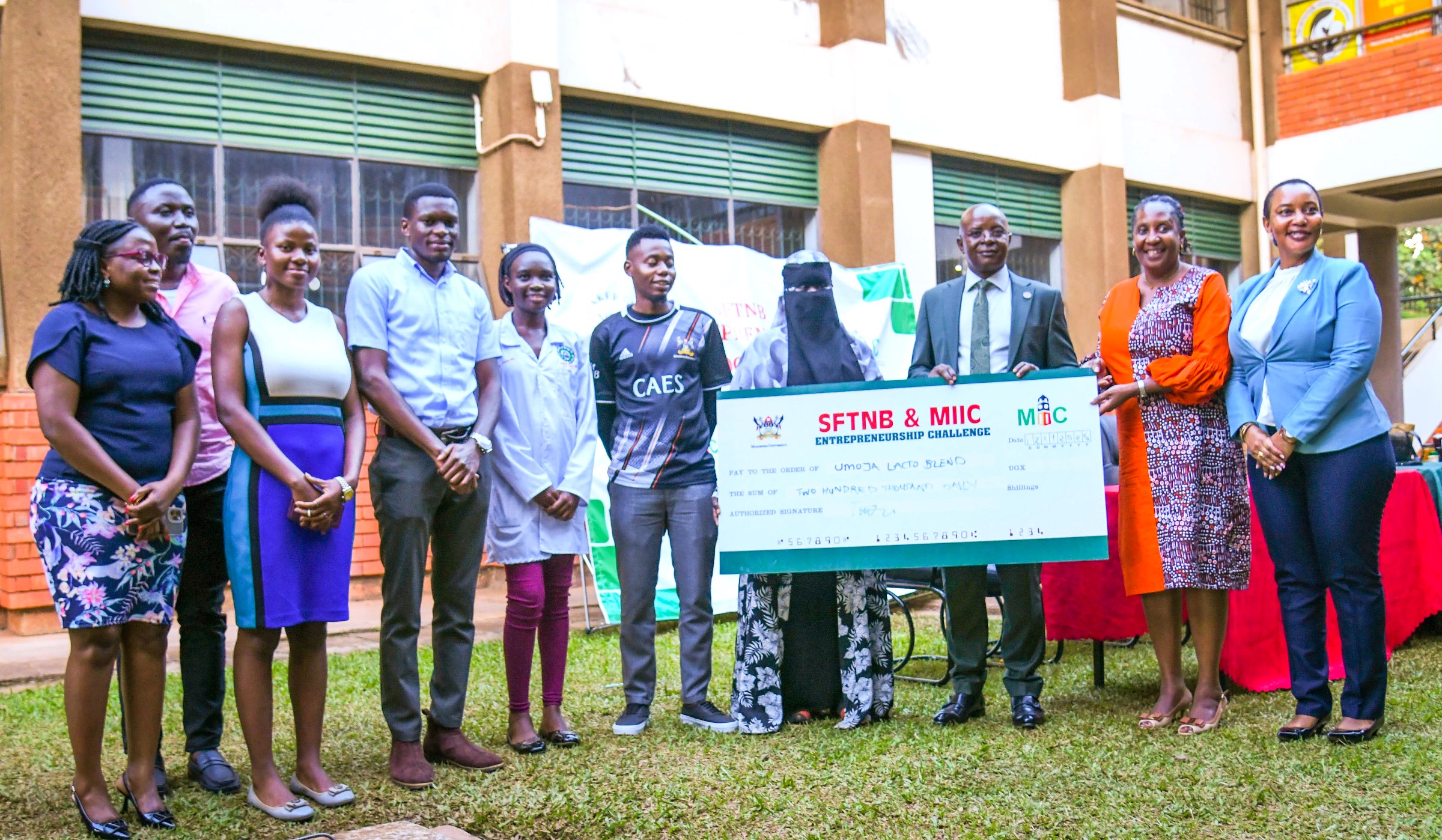
Trending
-
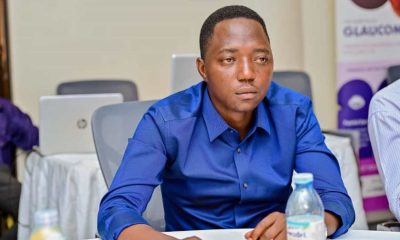
 General2 weeks ago
General2 weeks agoFrom Mastercard Foundation Scholar to Changemaker: Dr. Ekwaro Ronald’s Vision for Eye Health in Uganda
-

 General1 week ago
General1 week agoCall For Expression of Interest: WEE-DiFine Research Initiative
-

 Agriculture & Environment2 weeks ago
Agriculture & Environment2 weeks agoHow transformative education is shaping Africa’s next generation of innovators
-
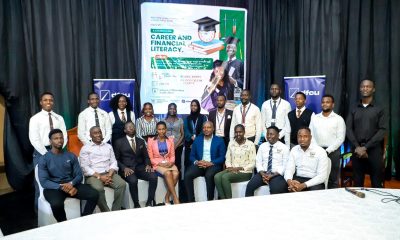
 General1 week ago
General1 week agoFrom Campus to Career: Makerere Advancement Office, 91st Guild and the DFCU Foundation Equip Students with Financial and Employability Skills
-
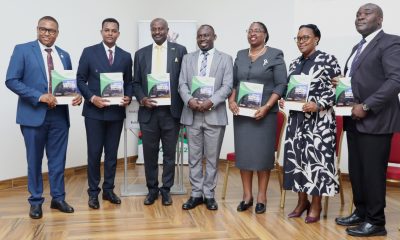
 Business & Management2 weeks ago
Business & Management2 weeks agoEfD-Mak, GRO Foundation & BoU Hold High-Level Roundtable on Green and SDG-Linked Financing
